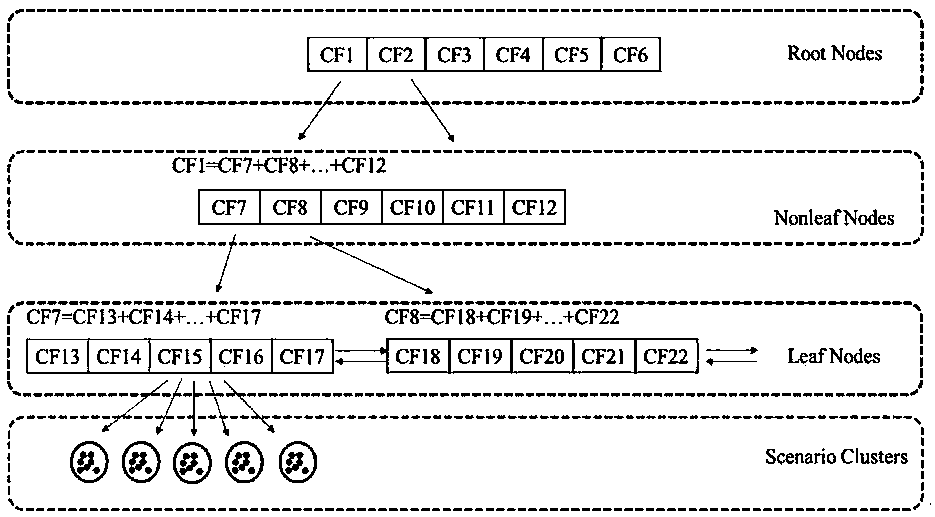Wind power output typical scene generation method based on BIRCH clustering and Wasserstein distance
A wind power output and scene technology, applied in wind power generation, probabilistic CAD, stochastic CAD, etc., can solve the problems of affecting calculation efficiency, large amount of calculation, low calculation efficiency, etc.
- Summary
- Abstract
- Description
- Claims
- Application Information
AI Technical Summary
Problems solved by technology
Method used
Image
Examples
Embodiment Construction
[0063] A method for generating typical scenarios of wind power output based on BIRCH clustering and Wasserstein distance, including:
[0064] Using the Wasserstein distance transformation to minimize W s The problem of finding M optimal quantile points in the case of ; assuming that the optimal quantile point is recorded as L m (m=1,2,...,M); the continuous probability density function of the variable x is recorded as h(x), and L can be obtained by the following formula m :
[0065]
[0066] Corresponding quantile L m The discrete probability p m for:
[0067]
[0068] In the formula, L 0 , L M+1 are the lower limit and upper limit of the variable x, usually taken as -∞, +∞ respectively; W s为 Integral over the r-th order distance measure of two probability density functions;
[0069] Usually, the uncertainty of wind speed at a single moment can be described by the Weibull distribution function, which is defined as follows:
[0070]
[0071] In the formula, v ...
PUM
 Login to View More
Login to View More Abstract
Description
Claims
Application Information
 Login to View More
Login to View More - R&D
- Intellectual Property
- Life Sciences
- Materials
- Tech Scout
- Unparalleled Data Quality
- Higher Quality Content
- 60% Fewer Hallucinations
Browse by: Latest US Patents, China's latest patents, Technical Efficacy Thesaurus, Application Domain, Technology Topic, Popular Technical Reports.
© 2025 PatSnap. All rights reserved.Legal|Privacy policy|Modern Slavery Act Transparency Statement|Sitemap|About US| Contact US: help@patsnap.com



